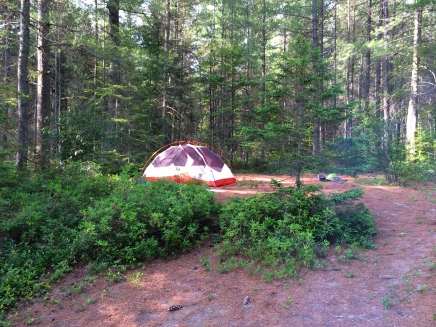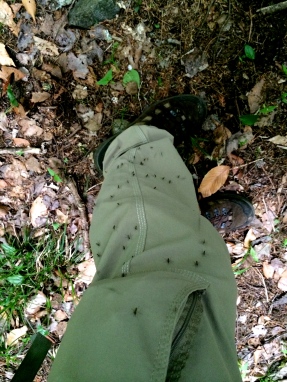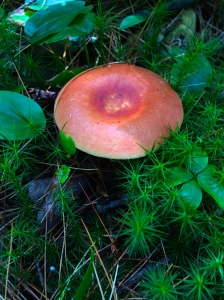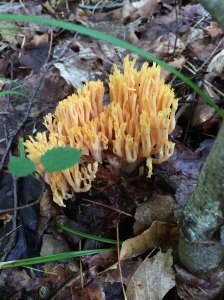Ground nesting birds are unusual in the forest because they have evolved to nest on the ground instead of in trees or shrubs (hey, everybody needs a niche). In the Adirondacks, the most prolific forest ground nesters are the ovenbird, hermit thrush, black-and-white warbler, and dark-eyed junco. There are also a few other species that will occasionally nest on the ground, but these are the main ones.
Building a nest on the ground exposes the eggs and young to a large set of potential nest predators, and as consequence, the nests need to be extremely well disguised or hidden. A large component of the study that I am currently working on involves measuring the reproductive success of these birds, and I can tell you that the success rate of ground nests is depressingly low. For example, ovenbirds can have up to three broods in a season, and it is not uncommon for all of them to be predated! Interestingly, there is evidence to show that the more experienced a bird is (2nd or 3rd year etc.) the less likely the nest is to be predated. Perhaps because the female learns to construct a better nest that is more well hidden.
There is a surprisingly wide array of animals that will eat the eggs or even live young from a ground nest. In the Adirondacks, we have observed raccoons, red squirrels, chipmunks, martens, and even white tailed deer predating nests. As you can see, the odds are really stacked against these birds! Amazingly however, many ground nesters do successfully rear their young, something that is extremely rewarding to see.
Below are some of the birds and their nests that we have come across this season….
This is the ovenbird, which is actually a warbler. The ovenbird got its name because the nest it builds supposedly resembles an old-fashioned outdoor oven. The call of the ovenbird is very distinct, and if you have walked through the forest you have almost certainly heard its loud “tea-cher tea-cher tea-cher” call emanating from the understory.

Ovenbird © John Wojcikiewicz
Here is an ovenbird nest I found with 4 speckled eggs. Note how the nest is constructed with a protective dome of twigs and leaves. This makes the nest virtually impossible to see!
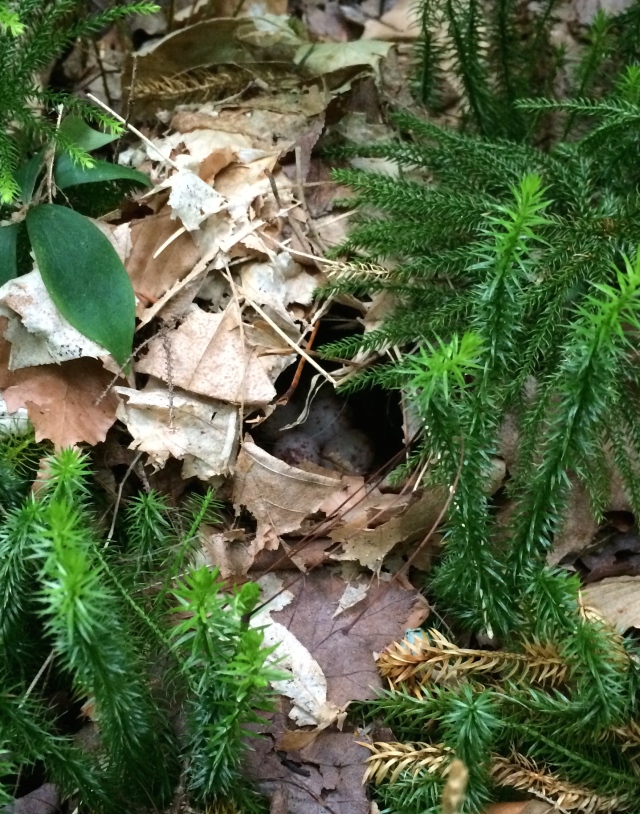
Ovenbird nest with eggs © John Wojcikiewicz
We went back to check the nest 7 days later and the eggs had hatched! Here you can see two of the nestlings being as still as possible in the hopes that I might not eat them…

Ovenbird nest with hatchlings © John Wojcikiewicz
Below is a hermit thrush nest. While hermit thrushes also nest on the ground, they do not build a protective structure over the nest and instead rely on natural features such as club moss or a tuft of grass for cover. The hermit thrush is closely related to the robin, as the blue eggs indicate.

Hermit Thrush Nest With Eggs © John Wojcikiewicz
Sadly, this female wasn’t as lucky as the ovenbird, and the nest was predated only a few days after we found it. It is unusual for a nest predator to leave the egg shells in the nest like this, and we are not totally sure who the culprit is in this case.

© John Wojcikiewicz
The female will almost certainly re-nest, and will hopefully choose a better location this time!
Finally, we have the dark-eyed junco. This is a common bird around feeders and houses, but few people realize that it is also a ground nester. However, unlike ovenbirds and thrushes, juncos generally do not build their nests in the middle of the forest floor. Instead they usually hide their nests in dense clumps of vegetation, often on a slope or around a rocky outcrop.

Dark-eyed Junco © John Wojcikiewicz
Here is a junco nest that we found along the side of a road.

Dark-eyed Junco Nest © John Wojcikiewicz
When we returned a few days later, the young were in the middle of hatching! You can see two freshly hatched nestlings and two remaining eggs. Lets hope mom built her nest in a safe place!

Dark-eyed Junco Nest with hatchlings © John Wojcikiewicz
All photos by John Wojcikiewicz



